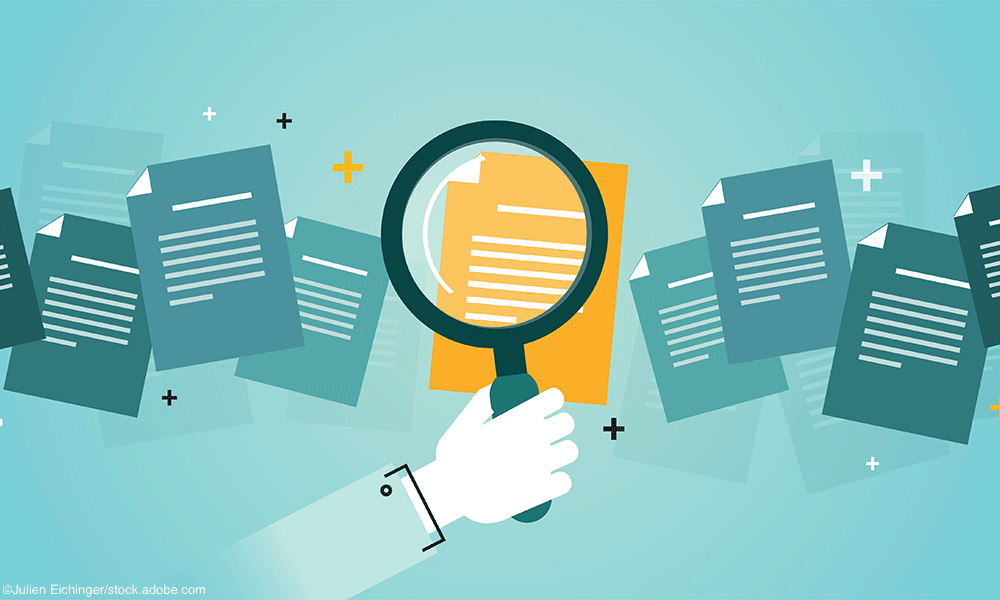The hazards of erroneous documentation
Precise patient documentation is critical to communicating a patient's condition, organizing their healthcare records, and facilitating payer reimbursement

Precise patient documentation is critical to communicating a patient's condition, organizing their healthcare records, and facilitating payer reimbursement, particularly during the current Coronavirus pandemic. When there is misinterpreted or inaccurate information, a cascading domino effect of errors can ensue. If a patient comes into a chaotic ER unconscious or unable to breathe, their Electronic Health Records (EHRs) become a lifeline.
Coding in the Era of COVID-19
Reviewing medical history is crucial when dealing with COVID-19 patients, especially if a physician is considering prescribing off-label use of existing drugs for the purpose of treating this virus. Accurate documentation is vital for such informed clinical decision-making as well as helping payers determine if care was appropriate and medically necessary.
COVID-19 has resulted in an unprecedented off-cycle International Classification of Diseases-Clinical Modification (ICD-10 CM) and CPT code update to add diagnosis and procedures codes. As telemedicine has become essential to keep a healthcare practice viable and enable care for low- to medium-risk patients during times of mandated social distancing, there also are guidelines to follow for telemedicine E/M service codes. Depending on the EHR being used, these codes may be automatically uploaded into the EHR via a software update, or the healthcare practice may need to manually enter the codes.
Either way, entering medical data is subject to errors. Here are some of the most common hazards.
Copying old info
Copying documentation or codes without verifying whether they’re still current can be dangerous and does little to increase productivity. The propagation of outdated or incomplete information may compromise the quality and safety of patient care, as well as the legal integrity of the health record. For example, if a patient is no longer taking allergy meds prescribed three months ago but this hasn’t been updated in the EHR, the mistaken consideration of perceived interaction becomes a concern.
Not adding supplements and OTC medicines
An incomplete patient record can also have disastrous consequences. Most employees understand the impact of incorrect coding, but there may be staff who take short cuts. If a patient is taking an over-the-counter supplement or herbal remedy and it isn’t entered in the EHR, contraindications with a medical prescription can lead to severe complications, physical harm, and even death.
Lack of coding specificity
The majority of coding errors have to do with specificity in documentation (to align with increased specificity for ICD-10 codes; e.g. laterality, type, location, cause). For instance, if there is a family history of breast cancer, a doctor may order a mammogram for a patient at age 25. Without the specific ICD-CM code(s) used for “family history of breast cancer”, the insurance company may question the reason for testing a woman so young or reject payment.
Incorrectly interpreting hand-written charts
Sound-alike or look-alike terms can sometimes be interpreted incorrectly, and if things are rushed, rather than getting details from the doctor, a coder might simply enter a non-specific code that doesn’t capture all the details. EHRs are legal documents and not only affect reimbursement decisions; they can become evidence in malpractice cases, Medicare/Medicaid fraud complaints, and workers' compensation determinations.
Ensuring Integrity of the Data
Having people who have completed a post-secondary program or degree and understand the importance of proper documentation is the simplest way to ensure the data is accurately submitted. Medical billing and coding or health information training ensures that staff know the medical terminology and codes, and understand the consequences of mistakes. Distance learning is an option for addressing this.
In an era where more data feeds into EHRs, incomplete or misplaced documentation can affect future care or billing problems after the visit. Especially as we come out of this pandemic, coding trainings for new hires and regular mini-trainings of all employees who handle EHRs are important and necessary to refresh their knowledge, emphasize careful management of electronic documentation, and to minimize the hazards of erroneous or missing.
About the Author
Lynnette Hessling, MSHI, RHIA, CHTS-PW, CHTS-TR is Program Director at Ultimate Medical Academy. UMA is a nonprofit healthcare educational institution with a national presence. Headquartered in Tampa, Florida and founded in 1994, the school has more than 55,000 alumni and offers content-rich, interactive online courses to more than 14,000 students as well as hands-on training to hundreds of students. UMA is institutionally accredited by the Accrediting Bureau of Health Education Schools.